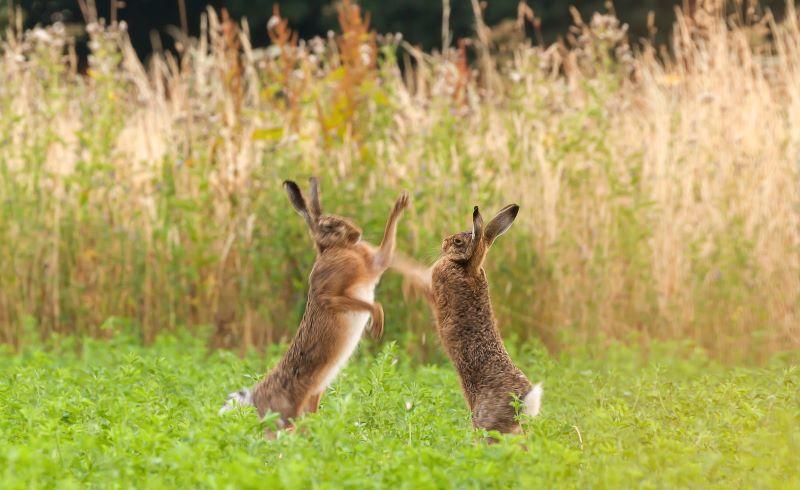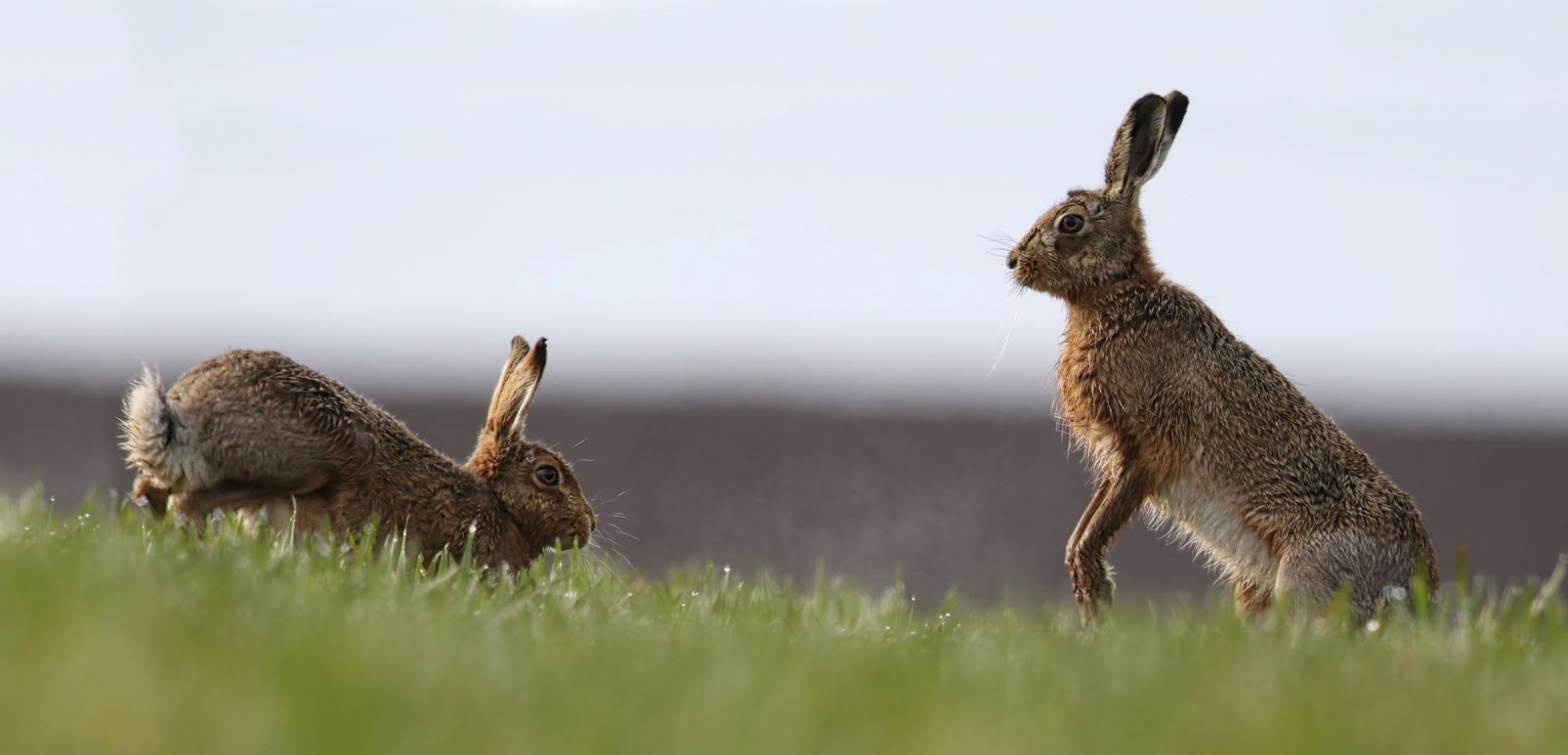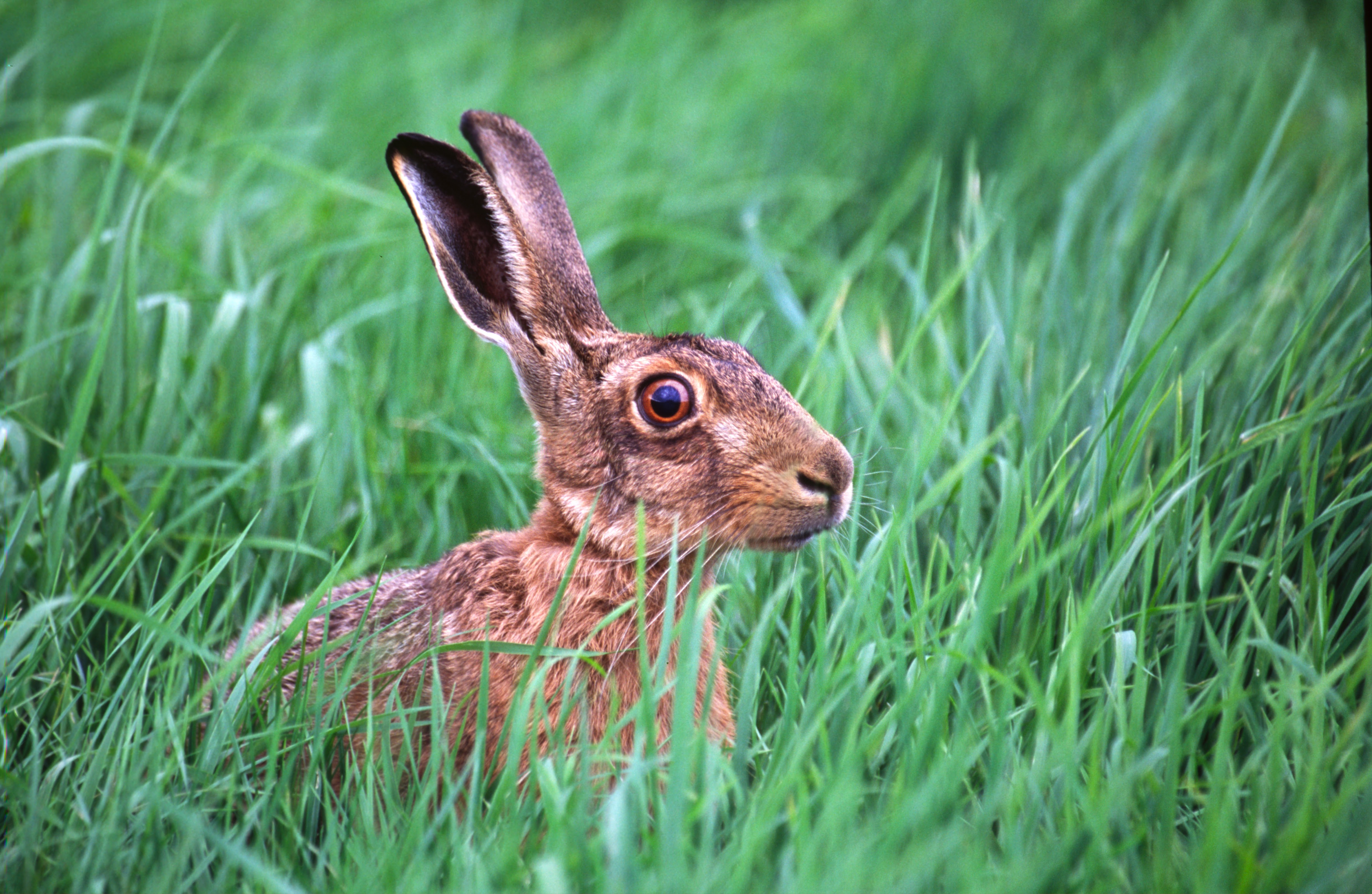
Mad March hares - boxing clever
During the breeding season, hares display the behaviour that gave us the phrase ‘as mad as a March hare’. Anyone who has ever been captivated by the strange sight of two brown hares boxing each other at twilight in a sun-dappled meadow will know what intriguing creatures they are. But what is the reason for this ‘mad’ behaviour and what more do we know about them?

A speedy species
Only the very lucky will have the chance to observe brown hares for any length of time. One of their greatest assets is their extraordinary speed and their large, powerful hind legs mean they can run at up to 72 kilometres per hour (that’s over 40 miles per hour!). There are three main species of hare in the UK – the mountain hare, the Irish hare and the brown hare, but it is the latter that is the only one in our neck of the woods.
Much larger than rabbits, brown hares have golden brown fur, a white belly, huge back legs and very angular faces. Unlike rabbits, as they run, hares tuck their tail down so their white underside is less visible although you may catch sight of their distinctive long ears with their black tips.
Secretive and solitary
Again, unlike their rabbit cousins, hares live exclusively above ground and often in very exposed habitats. Relying on their acute senses and blistering speed to avoid predators such as foxes, they spend most of the daylight hours in small depressions known as ‘forms’, which are usually secreted in long grass. Their diet comprises mainly grasses, young cereal and other arable crops, or shrubs in winter when grazing is difficult. They are particularly fond of the tops of our new cherry trees, as we discovered to our cost last winter!
For much of the year, hares are solitary creatures, but during the breeding season, from February to September, females can rear three or four litters of young hares, known as leverets. During the first four weeks of their lives, the leverets gather at dusk to be fed by their mother, but after that they receive very little parental care – this avoids any large gatherings attracting the attention of predators at a stage when the young are most vulnerable.

Boxing a match
It is during the breeding season that hares display the ‘mad’ behaviour that gave us the phrase ‘as mad as a March hare’. It’s not unusual to see an excited male hare jumping vertically around a field, but the ‘boxing’ occurs when females try to fend off amorous would-be mates, with both standing upright on their hind legs and trading or defending blows!
See hares for yourself
Areas of open ground within the Heart of England Forest is the best place to have a chance of seeing hares at this time of year, and they love the mown rides among the newer tree plantations. Find information about visiting the Forest.



